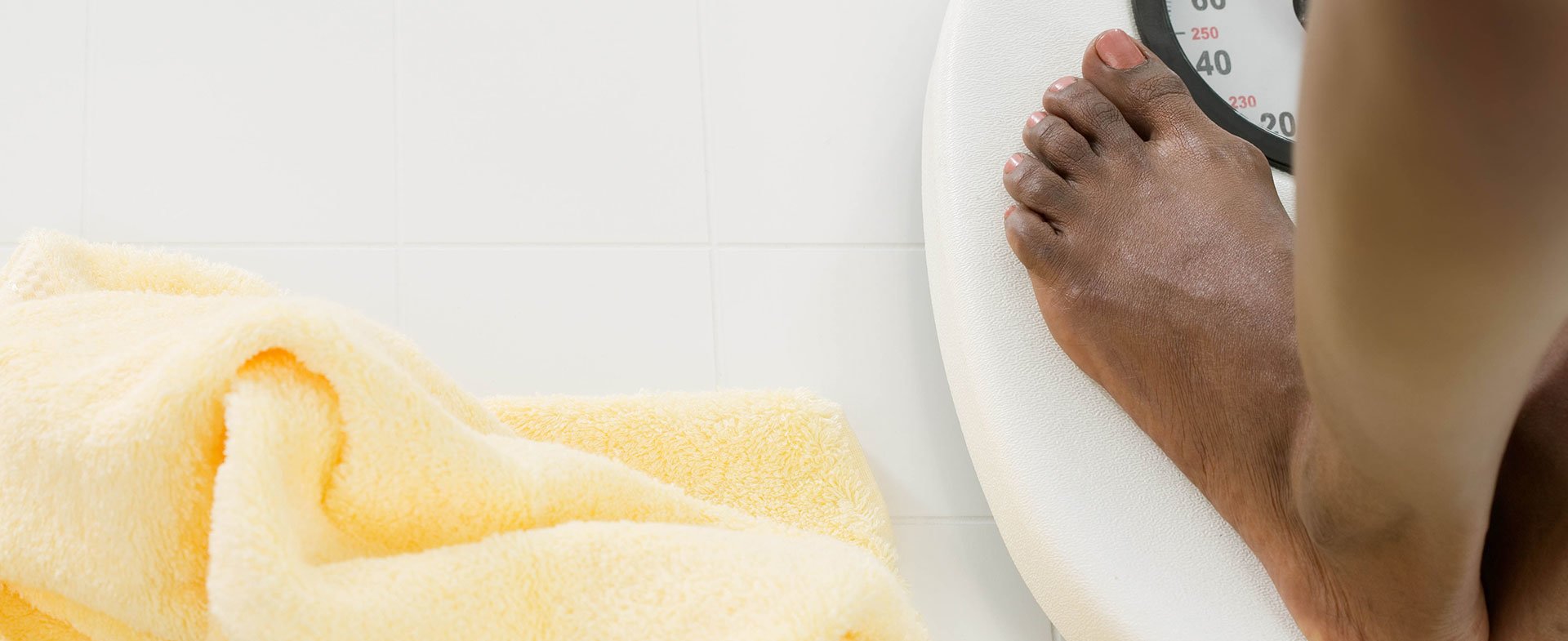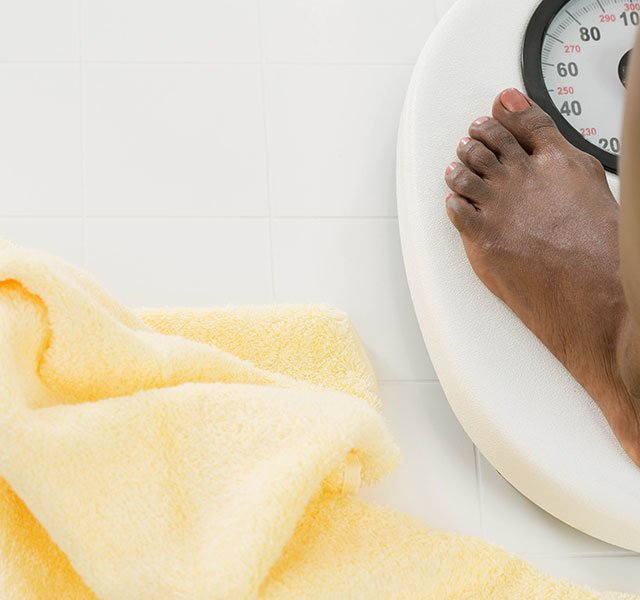It’s no secret that maintaining a healthy weight—and shedding excess pounds—is good for you. But now a growing body of evidence suggests that you don’t have to reach your goal weight to experience health benefits.
If you’re overweight or obese, even modest weight loss can lower your risk of conditions ranging from diabetes to hypertension (or high blood pressure). (And that’s just the tip of the iceberg!) A study published in the journal Cell Metabolism, for example, found that losing just 5 percent of your body weight (if you’re obese) enhances your body’s response to insulin (meaning your body is better equipped to use the calories you take in). What’s even more exciting is that the study’s authors also reported that modest weight loss improves blood pressure levels, heart rate and lowers the levels of harmful fats running through your bloodstream.
The key, of course, is maintaining that weight loss. And with a few small tweaks and adjustments, losing — and maintaining — 5 percent (or more!) of your body weight is a snap! Here are 10 strategies to help you slim down:
- Fill your plate with fruits and veggies. Fiber-rich foods like fruits and vegetables help keep your appetite in check, so you eat less food. Nibble on an apple before dinner, for example, and you’ll be less likely to overindulge. Green, leafy produce packs an equally powerful punch. Choose low-calorie gems like cabbage, celery, lettuce and spinach, and you may end up burning them off with the energy it takes to digest them.
- Start your day with whole grains and protein. Eating whole grains, particularly when coupled with protein, is another way to boost your fiber intake and fight off cravings. A few examples: Steel cut oats topped with ground flaxseed, whole grain toast smeared with peanut or almond butter and Greek yogurt sprinkled with whole grain granola.
- Switch to smaller bowls and plates. The size of food packaging and portions has steadily increased over the past 30 years. Even a small milkshake at most fast food restaurants is bigger than the original-sized shake sold in the 50s. Your best bet: Swap out your dinner plate with a salad plate and use kid-sized bowls for novelties.
- Don’t dismiss your beverages. Look at a teacup and then look at a coffee cup. Chances are, there’s a big difference. To curb your consumption of beverages beyond water, switch to a short, skinny 8-ounce glass instead of the standard 16-ounce tumbler. It’s that easy to cut those calories in half!
- Drink more water. The body can easily mistake thirst for hunger. So here’s a good rule of thumb to follow: Drink 4 (or more) 16-ounce bottles daily. (Check out these tips on drinking more water and simple ideas for creating flavor-infused water.)
- Control your environment. Studies show people eat more when food is easily accessible. Rather than devouring dinner party leftovers, send your guests home with doggie bags. And if you have leftover cake from a birthday party, donuts from your teen’s Friday night sleepover or pizza from an impromptu block party, take them to work the next day and put them up for grabs. The takers will appreciate your gesture, and you’ll avoid a dietary landmine.
- Measure up. Measure the sizes of your bowls, plates and glasses and fill them with the amount of food/drink you should be eating. So if your cereal bowl holds 2 cups and a serving size is 1 cup, you’ll know to fill half of the bowl before eating!
- Track your steps. Consider using a step tracker or pedometer to see how much you move throughout the day—then try to boost your daily quota. Take 2,000 steps a day, and you’ve walked a mile. Take 10,000 steps a day, and you’ve walked 5 miles. You can do it!
- Take every opportunity to move. Squeeze in exercise and physical activity wherever you can. Walk your dog. Park at the end of the parking lot. Take the stairs. Do squats or lunges when you’re talking on the phone. Even if you just flex your muscles for a few minutes during a commercial break, you’ll burn calories.
- Weigh yourself. Stepping on a scale at least once a week can help motivate you to amp up your health and fitness regimen. Even one pound gone is an exciting feeling—and a reason to keep up your healthy habits. And seeing the number creeping upward can help you work doubly hard to stop weight gain in its tracks.
No matter which strategy you choose, preventing weight gain and working towards gradual weight loss can make a dramatic difference over time. And once you get started, you’ll find sticking to new health behaviors becomes second nature.



